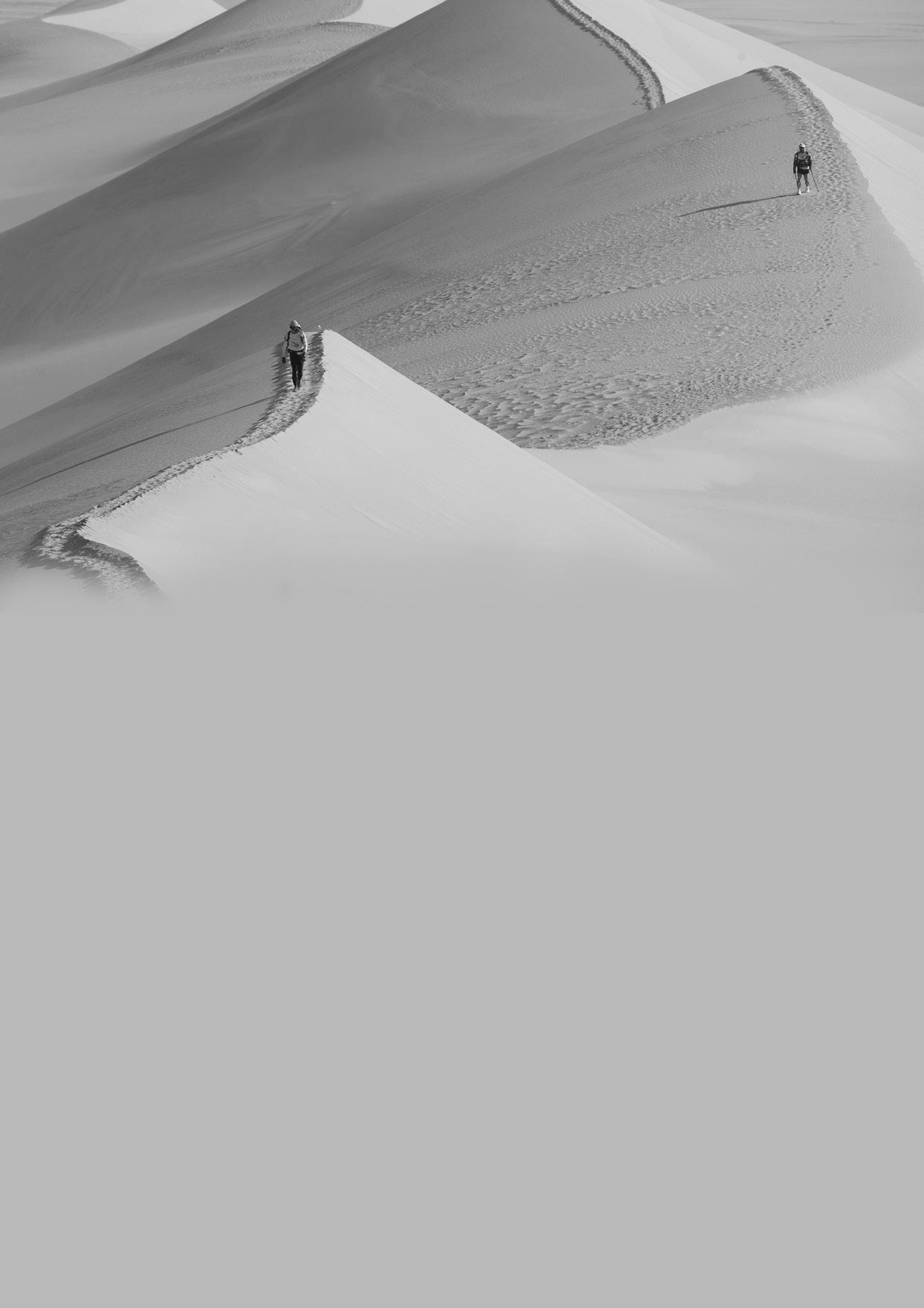
11 minute read
ADVENTURE IN THE DESERT
Adventure Races
in the Desert
Greg Tamblyn
For most of us a multi-day Orienteering event is tough enough. How would you like to compete in a 250 kilometre race in some of the most remote areas in the world?
The format of these desert races
Each year there are four races - the Atacama Desert in northern Chile (see report in AO-December, 2006, p32), the Gobi Desert in western China, the Sahara Desert in Egypt and one in Antarctica (yes, it’s classed as a desert). Each race is a 7-day stage event covering a total distance of 250km. Days One to Four are between 30 and 45km. each day, then days 5 - 6 include a night stage up to 90km long. The organisers supply water, plenty of it, excellent medical support and a place in a tent each night. As a competitor I have to carry my sleeping bag, clothing and all food and emergency gear for the whole race. My pack starts out at 9.8kg without water; of this 4.5kg is food and electrolytes. On each race there are 80 to 150 competitors from perhaps 20 different countries. Like Orienteering, a trip like this is a great way to make friends.
Greg has done three of the four races.
They have all been very different. In July 2006 I completed my first race in the Atacama Desert in Chile, the driest in the world with a huge area of horrible salt flats that we had to cross time and time again. But it also has amazing views of the Andes. This was the race I enjoyed the most. In July 2007 my second race was in the Gobi Desert based near Kashgar in western China. We passed through a number of mountain gorges and river valleys, and then eventually crossed a huge sandy plateau. Every few hours you would come around a corner and find local people farming and herding animals. Then in November 2007, four months after the Gobi, my third race was in the Sahara Desert north-west of Cairo in Egypt. The Sahara was the classic sandy desert that you see in the movies - as far as you could see there was no vegetation, just sand all day every day. The race was based in an area named the White Desert about six hours drive by bus northwest of Cairo. It is a huge area with lots of bright white rocky outcrops rearing out of the sandy desert. There were even a few surprises - on our route we came across a small cave with a mummy inside; and later we came to a classic oasis with three palm trees and a small pool of water. The last day was probably the most memorable. It started in the desert, then eventually the course took us through a gap in a wire fence and we finished our 250 km. with a run around the base of the Pyramids, the only one of The Seven Wonders of the World which still exists, on the outskirts of Cairo, a monster city. Unfortunately I got very ill on Day Two and for a number of days I could not keep any solid food down. I eventually completed about 150km but was forced to DNF.
Specific training and preparation
I keep practising everything during training. Every training session is a physical test, as well as a test of the most comfortable gear setup for me and a test to determine the right nutrition. The food I chose for the Sahara race was different to the Gobi. My training program starts about 10 months before the race and has continued to be a mixture of long runs of about 25–35km., and Orienteering, all carrying a 10kg pack.
How do I get through five to six days?
The races are definitely physically hard, but the mental challenge is much harder. You go through a number of mental highs and lows. Some people rely on their MP3 players, some sing out loud, others just go into an internal shell and slog it out all day. Whatever you do, your mind always has to keep telling your body to go and go and go and then to get up and do it all again the next day. For most competitors Day One is the hardest, probably because packs are fully loaded and it takes a while to get used to the terrain. After that you start eating your food, the pack weight goes down and you seem to get faster each day.
What’s next?
Over the next couple of years my goal is to complete the Sahara race and then I can qualify to start in the Antarctica race. That would be cool. If you want to follow any of the races in 2008 on the web, go to www.4deserts.com
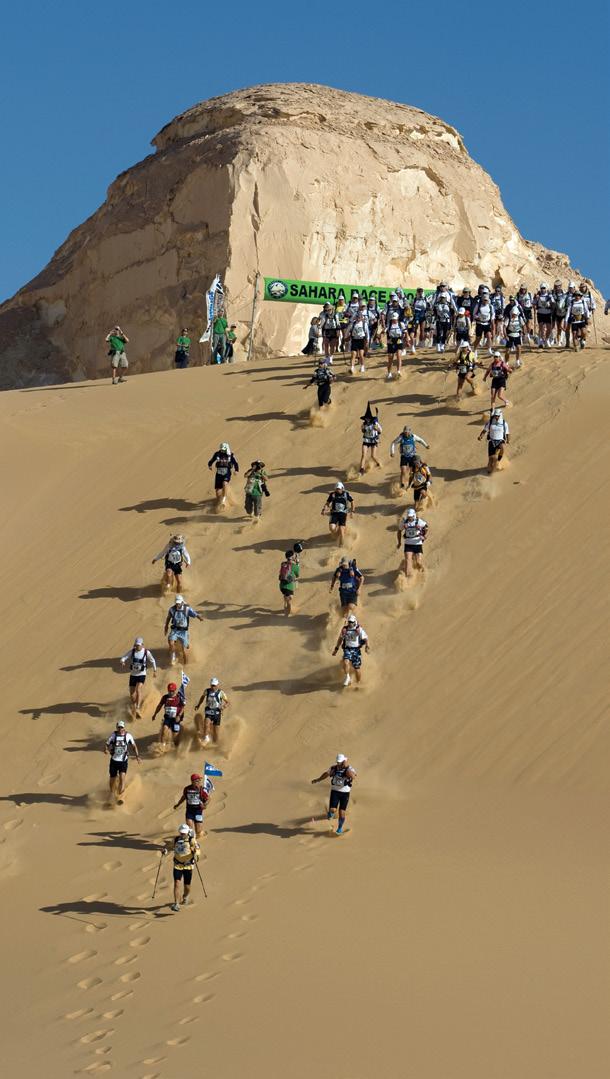

GREG TAMBLYN Engineer. Started Orienteering in Victoria in 1972 and joined the Red Kangaroos club. Now M50 and a member of Bayside Kangaroos OC. Former VOA secretary. Now bush-O coordinator for BKV. Highly involved in the organisation for most major events in Victoria over the last few years including World Masters 2002, Australian Championships Carnival 2003.
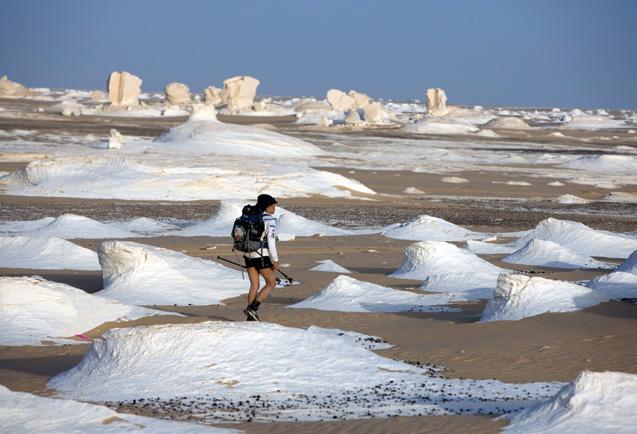

Per-Olof (Peo) Bengtsson
– 74 years young
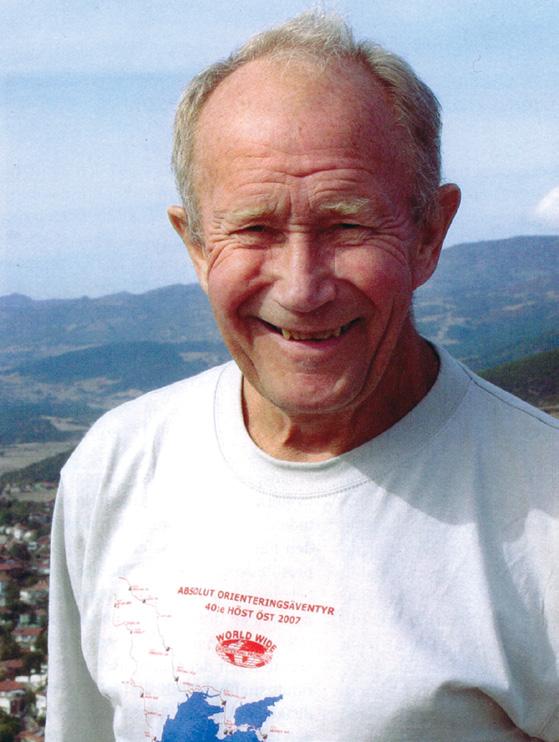
MANY of us will remember back to the mid-1970s when Peo Bengtsson and Roland Offrell came to Australia with some Swedish friends to teach us how to make good maps, to set good courses and to navigate through the forests. We hoped they would tell us the great secret of how to be a good orienteer, but we soon found that there was no magic secret, just a lot of hard work and training. Peo Bengtsson first took part in an Orienteering event when he was 16 years old. He joined the KFUM Kristianstad club in 1949. The club changed its name to Pan-Kristianstad and Peo is still a member. In 1965 Peo and other elite Swedish orienteers formed a group called the O-Ringen to promote and organize a new Swedish 5-Days competition. In the first year there was just 167 participants but the event’s popularity grew rapidly until entries topped 25,000 and a limit had to be placed on participants from Sweden. Peo’s thirst for travel and Orienteering led him to organise many tours around the world. His tour groups to Australia helped us get major 5- and 6-Day events established here. It’s always a fascinating sight to see European orienteers coming from cold northern winters hit the bright sunlight of an Australian summer with temperatures approaching 40 degC. Those of us who have joined one of Peo’s European tours will have memories of tight schedules and of Orienteering at any time of the day or night. And it was certainly a great way of getting to events in places you might otherwise never have visited. Peo’s most recent tour in October’07 took 139 orienteers on an odyssey through Hungary, Romania, Bulgaria, Turkey, Azerbajdzjan, Iran, Armenia, Georgia, Russia, Ukraine and Moldova. When will Peo stop Orienteering? Certainly not yet. Think of a country, any country, and it’s very likely that globetrotting Swede Peo Bengtsson has orienteered there. Try this for an impressive list – the years in brackets are the first time Peo competed there (translated from Skogssport 10/2007).
That’s certainly an impressive achievement by a true ambassador for the sport of Orienteering. Peo claims 89 countries, but here at The Australian Orienteer Dept for Checking World Records we think you can’t clam a country twice simply because it split up and changed its name. So Czechoslovakia, Czech Republic and Slovakia have to count as just two countries at the most; likewise the Soviet Union should not be claimed, nor Yugoslavia. That brings Peo’s total down to a mere 86 countries.
Europe:
Sweden (1949) Norway (1951) Denmark (1959) Finland (1960) Czechoslovakia; Switzerland; Germany (1961) Austria; France; Belgium (1966) East Germany; Hungary (1968) Romania (1970) Great Britain; Bulgaria (1971) Spain; Luxembourg (1973) Poland (1975) Yugoslavia (1977) Italy (1978) Ireland (1979) Soviet Union (1981) Portugal (1983) Netherlands (1984) Greece (1987) Iceland (1988) Liechtenstein; San Marino (1990) Andorra (1991) Estonia; Russia; Latvia; Slovenia (1992) Lithuania (1993) Czech Republic; Slovakia; Croatia (1994) Ukraine (196) Belarus (1998) Moldova (1999) Turkey; Macedonia (2000) Gibraltar (2001) Albania (2002) Serbia-Montenegro; Bosnia-Herzegovina (2003)
Oceania:
Australia; New Zealand (1975) Tahiti (1978) Fiji (1984) Tonga (1993) New Caledonia (2005)
Asia
Philippines; Singapore (1977) India; Thailand (1981) Hong Kong; Taiwan; Japan (1982) Israel (1983) China; Korea (1986) Malaysia (1987) Indonesia (1992) Macao (1997) Kazakhstan (1999) Georgia; Armenia; Iran; Azerbajdzjan (2007)
Americas
Argentina (1973) Brazil (1978) USA: Canada (1982) Cuba (1987) Paraguay; Chile; Mexico (1991) Ecuador (1995) Uruguay (1997) Venezuela (1998) Colombia; Costa Rica (1999) Greenland (2002)
Africa
Kenya; Tanzania (1992) South Africa; Swaziland (1993) Morocco (2001)

Swedes love the sun – none more so than Peo Bengtsson. First sign of sunlight and off comes the top. (Photos courtesy Skogssport)
2007 Nordic Night Championships
What a way to start your course – especially a night course. Norwegian champion, Marianne Andersen, had a horror start to her Nordic Night Championships course last year. Control #1 was in a small gully (or re-entrant) with a small but sharpish spur to the right. Marianne pulled up short then, thinking that she had gone too far in the dark, followed a bigger spur too far to the left. Mistakes seem to have compounded after that and she was in and out and round about until she eventually found the track to the NW. She clearly still thought she was too far east because she started to go the wrong way on the track, but quickly realised where she really was, headed along the track, over the knoll and turned right down to the control. The rest of her course appears to have been plain sailing which just goes to show how experienced orienteers can recover well from a terrible mistake.

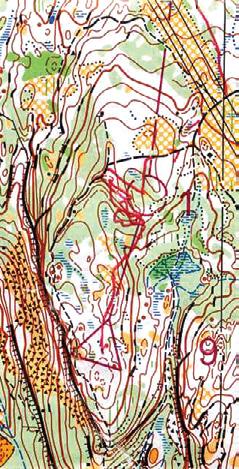
2006WOC-Middle-Andersen finishes (photo M Hubbert)
WOC’07-Sprint Qual-D Hubmann (SUI)
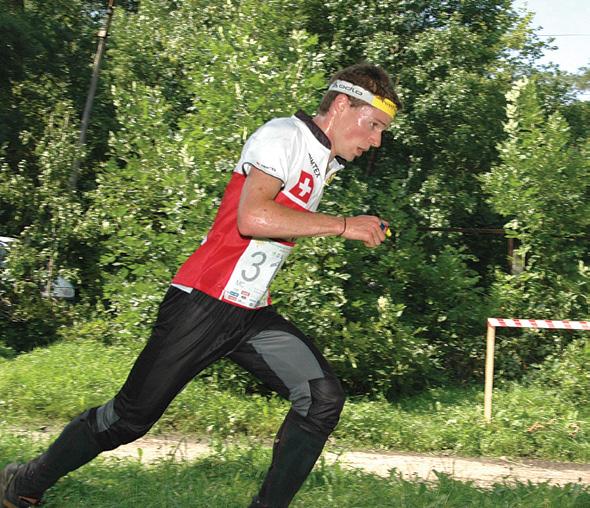
2007 World Cup Final
Stein am Rhein in Switzerland was the venue for the World Cup Final Sprint event. The Mens’ Sprint was won by France’s Thierry Gueorgiou by 2.5sec from Matthias Muller of Switzerland. But the real story from the event was Swiss Daniel Hubmann’s problems with Control #22. The control flag was in a small archway (see photo). Hubmann claimed it was hidden. He got close but then turned back. Then he ran past the small square again, just pausing to look in before running to the main street beyond. Then he ran back and into the small square again before finally finding the control. He lost some 40sec and ended up finishing 3rd in the race. He probably would have won but for that ‘mistake’. Hubmann claimed the map was wrong and in that he is correct. The control is in an archway which should have been mapped as light grey. It wasn’t. Other Swiss runners were caught by it too. David Schneider lost 17sec and fell from 5th to 13th place, and Angela Wild lost 53sec, falling from 13th to 27th place.
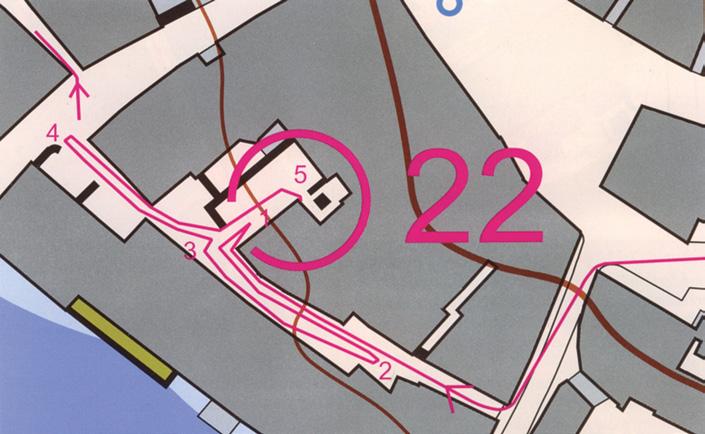
Map & photo courtesy Swiss Orienteering Magazine



The UK’s Orienteering Magazine
Packed with maps, event reports, coaching tips and advice, MTBO, Mountain Marathons/Rogaining, Competitions and much much more.
Subscribe online using all major credit cards at www.CompassSport.co.uk
52 pages, full colour, 6 times a year for
c.75AUD/85NZD (depending on exchange rate)
Vol 28 Issue 4 August 2007 £4.00
Know Your Class Leader University of Oxford OC World Masters Route Gadget Competitions Greenland O Dave Peel RC#5
Alternative Summer Formats Mountain Marathon Review Know Your Class Leader Controller’s Conundrum Scottish 6-Day Report Magnetic Anomalies Cumbrian Galoppen White Rose Report Forrest Rumblings
Vol 28 Issue 5 October 2007 £4.00
MTBO Croatia O News in Brief Out of Control Harvester Trophy British Championships Controllers Conundrum Mountain Marathon Review
www.CompassSport.co.uk
Vol 28 Issue 2 April 2007 £4.00
British Night Championships Army Night Championships Mountain Marathon Review Whitbarrow National Event Know Your Class Leader University of Warwick OC Controllers Conundrum MTBO Portugal WRE JOK Chasing Sprint Deeside Night Cup Out of Control News in Brief Competitions Dave Peel RC#5 GPS
www.CompassSport.co.uk
RC#5 Fixtures Photo-O Dave Peel WOC Report Competitions News in Brief Out of Control
www.CompassSport.co.uk
AMAZING
New Zealand
tales

New zealand orienteering in full colour
drama % action % passion % thrills & spills
magazine subscription via www.nzorienteering.com or email nzof@nzorienteering.com annual subscription (4 issues) = 31.50 NZD ≈ 13GBP or 28AUD







